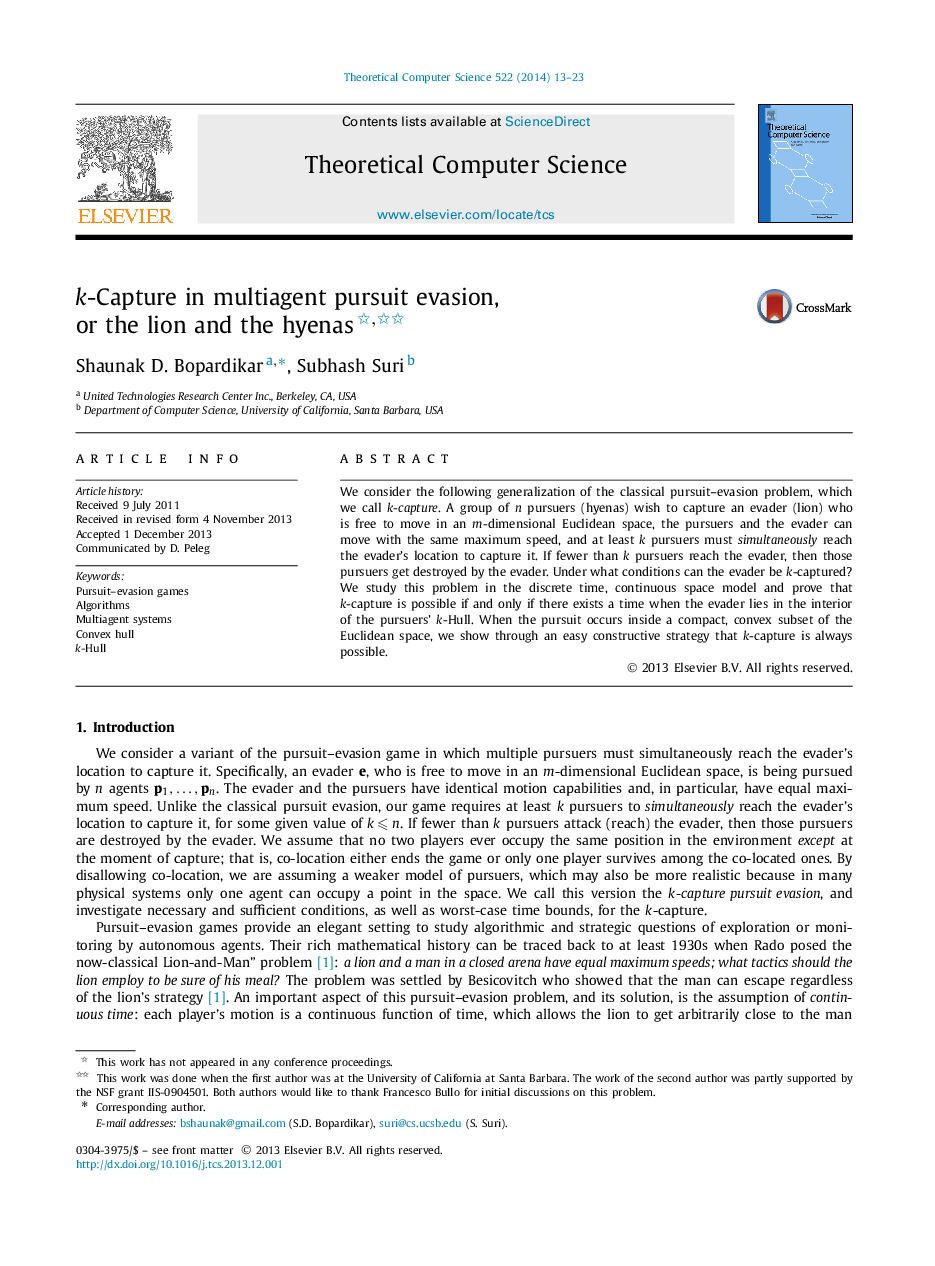| Article ID | Journal | Published Year | Pages | File Type |
|---|---|---|---|---|
| 434469 | Theoretical Computer Science | 2014 | 11 Pages |
We consider the following generalization of the classical pursuit–evasion problem, which we call k-capture. A group of n pursuers (hyenas) wish to capture an evader (lion) who is free to move in an m-dimensional Euclidean space, the pursuers and the evader can move with the same maximum speed, and at least k pursuers must simultaneously reach the evaderʼs location to capture it. If fewer than k pursuers reach the evader, then those pursuers get destroyed by the evader. Under what conditions can the evader be k-captured? We study this problem in the discrete time, continuous space model and prove that k-capture is possible if and only if there exists a time when the evader lies in the interior of the pursuersʼ k-Hull. When the pursuit occurs inside a compact, convex subset of the Euclidean space, we show through an easy constructive strategy that k-capture is always possible.
